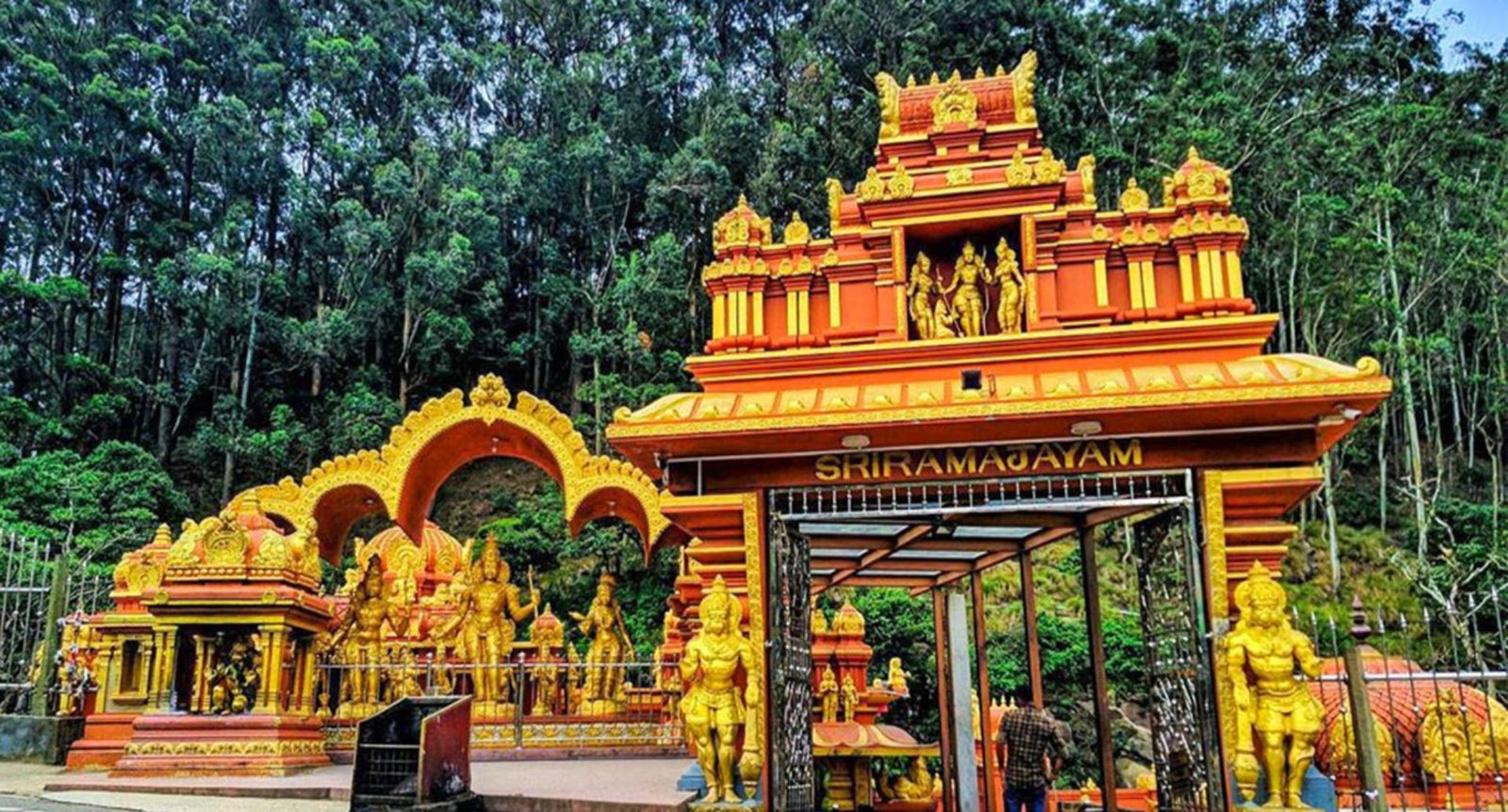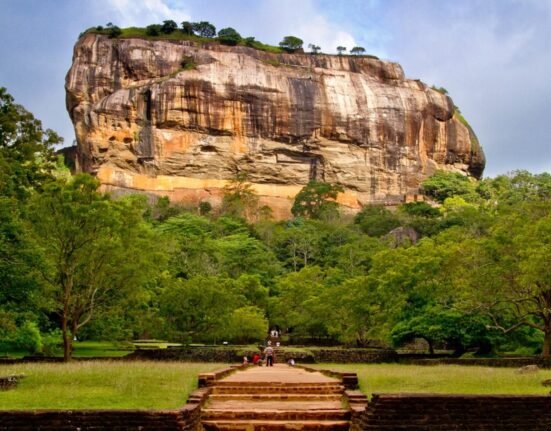There are two great poems of India; Ramayana and Mahabharata. Ramayana composed of sanskrit simply translates to Rama’s journey. It was written by sage Valmiki. The poem is believed to be written to be around 300 BCE. There are 24,000 verses which have composed Rama’s life journey into a beautiful poem. Ramayana is a story that is not only being passed down among Indian generations but also with many other South Asian countries. It is a significant part of Indian culture and Hindu literary works.
Contents
The Legend of Ramayana
There was a kingdom named Ayodhya which was governed by a wise and just ruler, namely King Dasharatha. The king had three wives; however he was childless. The desperate man for an heir to the throne performs a yagna(hindu ritual) called Putra Kameshti sacrifice. Putra Kameshti is a ritual done in hopes of receiving a son. At the sacrificial ritual the god of fire, Agni arose from the flames and gave some nectar to King Dasharatha to give to his wives. The king gave half of it to the first queen, then let the second queen drink the portion left after the eldest drank nectar. Same repeated with the youngest queen when the king gave the other half of the nectar to her and what was left after was given again to the second queen. Soon enough the queens conceived and the king was blessed with four sons.
Rama was the eldest prince born and he is believed to be the avatar of God Vishnu. As he grows up Rama is reputed as a handsome and brave prince. He is adored by all the citizens of Ayodhya. The prince was under the tutelage of sage Vishwamitra along with his brother Lakshman. The sage once takes them to the neighbouring country, Mithila. There the three of them attend the kingdom’s princess’s swayamvar festivities(coming of age celebrations). Sita was the Mithila princess who had been adopted by the great Mithila king. The test for the ideal husband of the princess was to string the great bow of Lord Shiva. Amongst many suitors only Rama was able to string the bow. Eventually Prince Rama married Princess Sita and Rama’s three brothers were married to Seetha’s sister and two other cousin sisters. The marriage celebrations were held for a long time.
Years Pass, King Dasharatha decides to pass on the throne to his eldest son. However, it was challenged as the youngest queen brought up a promise that the king made to her in the past. Rama must be exiled for fourteen years while his son, Bharath is crowned the king. This could be a result of jealousy invoked as Rama’s popularity among people was enormous as the next king. The prince goes into exile for 14 years. It was a decision taken to avoid any civil war within the kingdom. His wife Sita and brother Lakshman followed despite his efforts to leave them at the palace. The king grew sad and became gravely ill. Then soon passed away two days after Rama’s departure.
During their exile a demoness named Surpanakha fell in love with Rama at first sight. He said he already has a wife and pointed to Lakshman, telling her to approach his brother. Lakshaman said he had made a vow to practise celibacy for sometime. The two brothers tried to avoid the demoness for a long time, she went to kill Sita out of anger. Lakshman cut her ears and nose to protect Sita. Surpanakha was the beloved sister of King Ravana. The enraged king made a plan to take vengeance from Rama. One day a beautiful golden deer visited Sita and the two brothers chased after it. Meanwhile Sita was abducted by Ravana from Dhadumonara(Ravana’s chariot). When the princes hunted the golden deer they realised it was a demon in disguise and went back to Sita. She was nowhere to be seen and the two brothers began their search for Sita.
In their journey the princes met Hanuman who helped Rama in locating Sita in Lanka. Ravana has hidden Sita within the country. In order to reach the Lankan kingdom Rama received aid from the monkey army. The monkey king Sugreeva lent his army to march southwards with Rama to confront the demon king. The two armies fought each other hard and bloody. After an intense and dangerous battle Rama rescues Sita by killing Ravana. Rama upon arrival asked SIta to prove her innocence because she had been taken away by the demon and was kept for a long time. Sita who was hurt by his suspicion entered a burning pyre intending to give her life away. To her surprise and Rama’s surprise lord Agni rose from the fire and safely carried Sita to Rama. She was not hurt at all by the fiery flames of the fire. This later became a ritual named Agni Pareeksha. A ritual to prove women’s chastity.
Upon their arrival to Ayodhya, Rama was crowned as the king. By the time fourteen years of exile had passed away. The kingdom was ruled by Rama for a very long time. It was an era of prosperity, peace, happiness and a society full of kind and honest people. The story gives off a happy ending at the end of the sixth chapter.
However inside Uttar- Ramayana, the seventh chapter continues the story further. Despite the good times in King Rama and Sita’s lives, years later rumours were spreading about Sita bewitching Ravana and being an unfaithful wife to Rama since she was abducted by Ravana. Rama who could not ignore this rumour requested from Sita to undergo Agni Pareeksha. She refused at first and was banished. Lakshman who was escorting Sita left her near the hermitage of Valmiki.
Rama did not know his wife was pregnant at the time. Sita was taken in as an ashram inmate by Valmiki. There she gave birth to their twin children; Lava and Kush. Valmiki brought up the children with great care and taught them all necessary knowledge. Valmiki was writing Ramayana at the time. After finishing composing he taught the poems to Lava and Kush. These ignorant children of their own parents’ story would recite the poem at gatherings in public. Gradually fame surrounded the two young boys who sang sweetly. They became so popular that King Rama heard of them.
The king ordered them to present before the royal court. At the royal court a surprising revelation happened. Lava and Kush were very similar to Rama’s image. The king discovers the existence of his sons and the children understand Ramayana was composed based on their mother’s story. Ashamed and in remorse Rama invites Sita back asking her to prove her chastity in front of everyone. Sita in agony cried out to the goddess of land asking to take her away from this world. It says in the story that the ground parted, the goddess emerged on a golden throne, took the woman in agony, descended and the ground was closed up. The king who was full of sorrow abdicated the throne to his sons.
Importance of Ramayana to Hindu Culture
The story itself represents a moral and spiritual lesson that has been passed down through generations in India. The highlighted themes in the story are good over evil, importance of dharma and woman’s faithfulness. In Northern India there are many temples dedicated to Rama. Even in countries like Indonesia, alaysia, Cambodia and other South-East Asian countries there are versions of this story being told.
There are several versions of Ramayana.
- Valmiki Ramayana – The earliest and most authoritative version of Ramayana.
- Ramacharitmanas – This is a version of Ramayana written by the 16th century saint and poet Tulsidas in Hindi. This has helped in popularising the story among the masses and made it more accessible to people who did not understand Sanskrit.
- Sri Lankan version – This version of Ramayana also known as Ramavataram or the Lanka Kanda, is unique in that it places a greater importance on the role of demon king Ravana and portrays him as a wise and noble ruler.
- Kamban’s Ramayana – This is a tamil version of Ramayana, written by the poet Kamban in the 12th century. This version is notable for its poetic language and its emphasis on the devotion of Lord Rama’s followers.
- Yaksha Prashna – A dialogue between Lord Yama and King Yudhishthira from the Hindu epic, the Mahabharatha in which Yama asks Yudhishthira a series of moral and philosophical questions. The Ramayan is mentioned in this dialogue and provides a unique perspective on the story.













